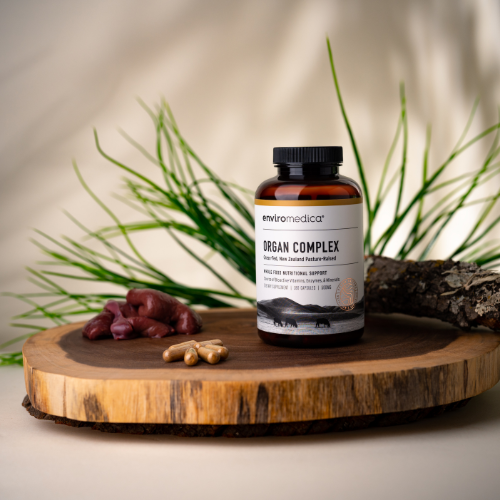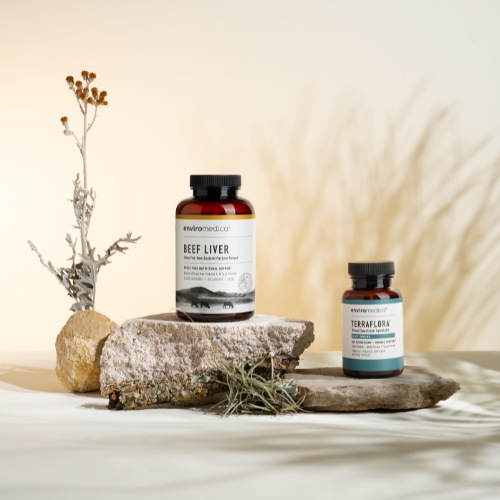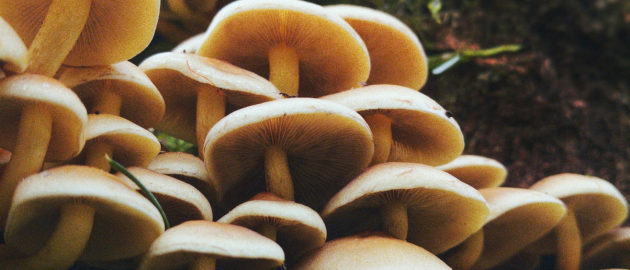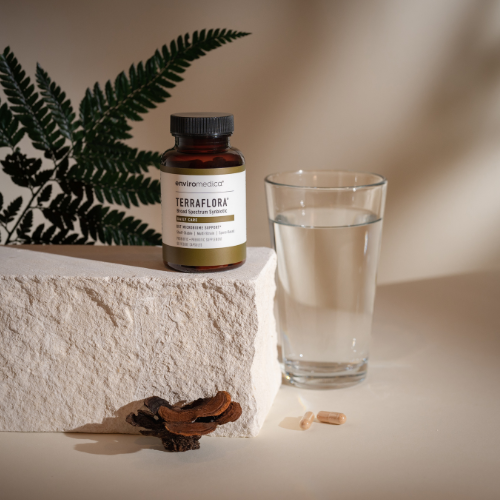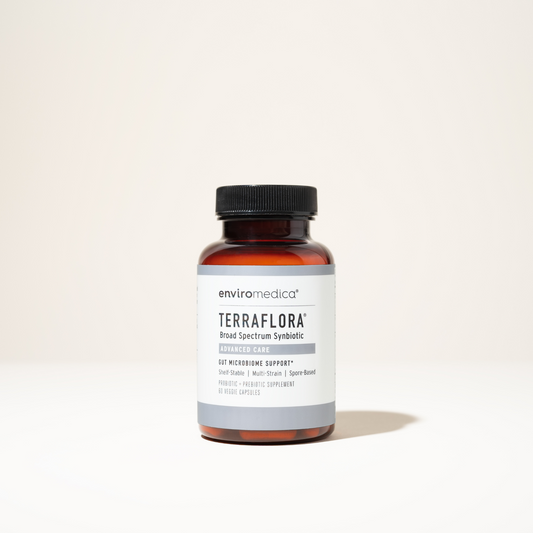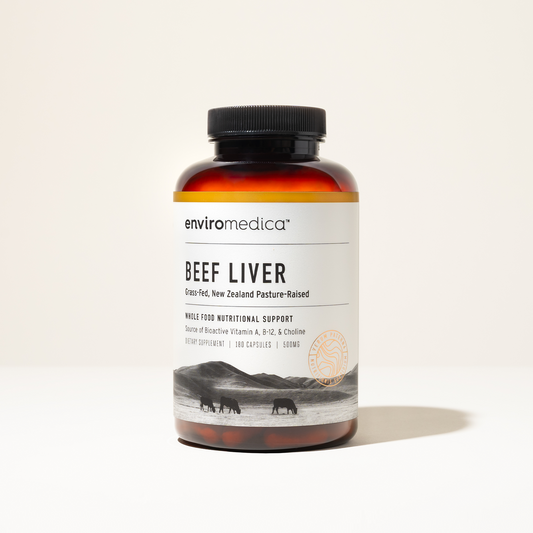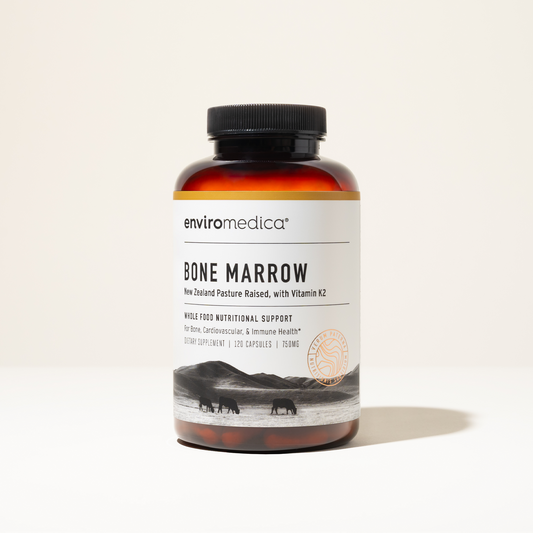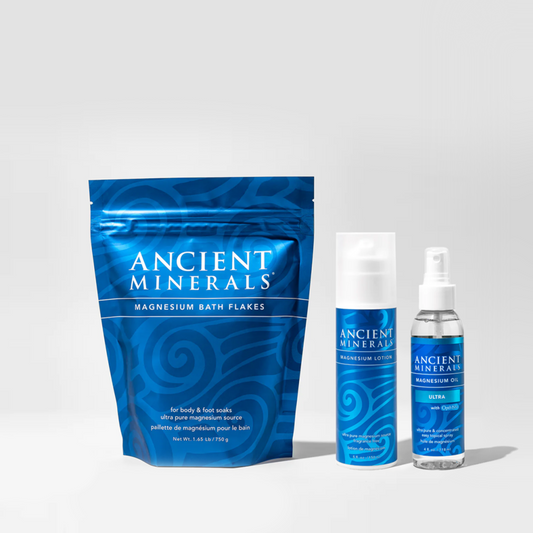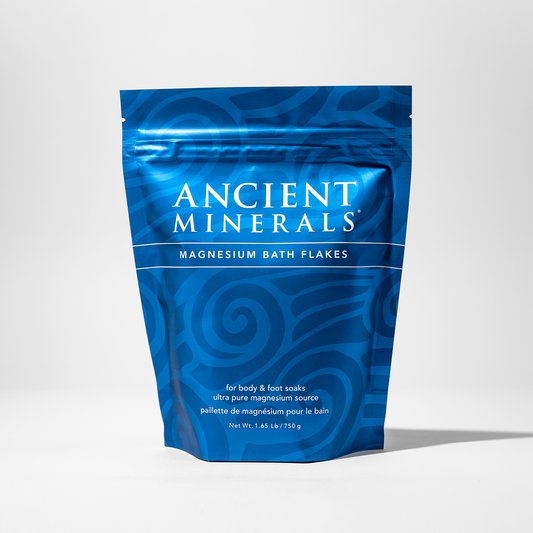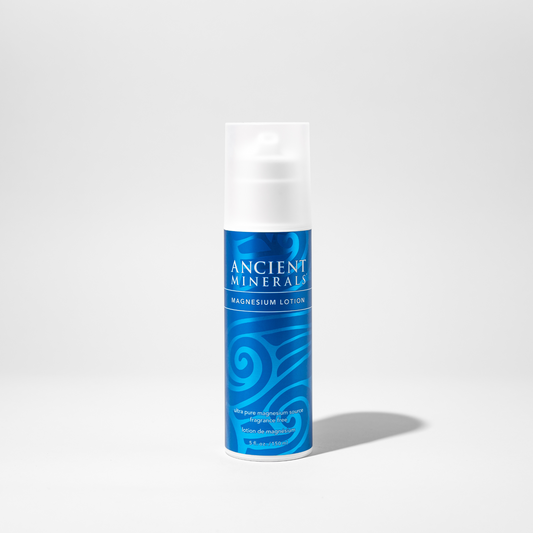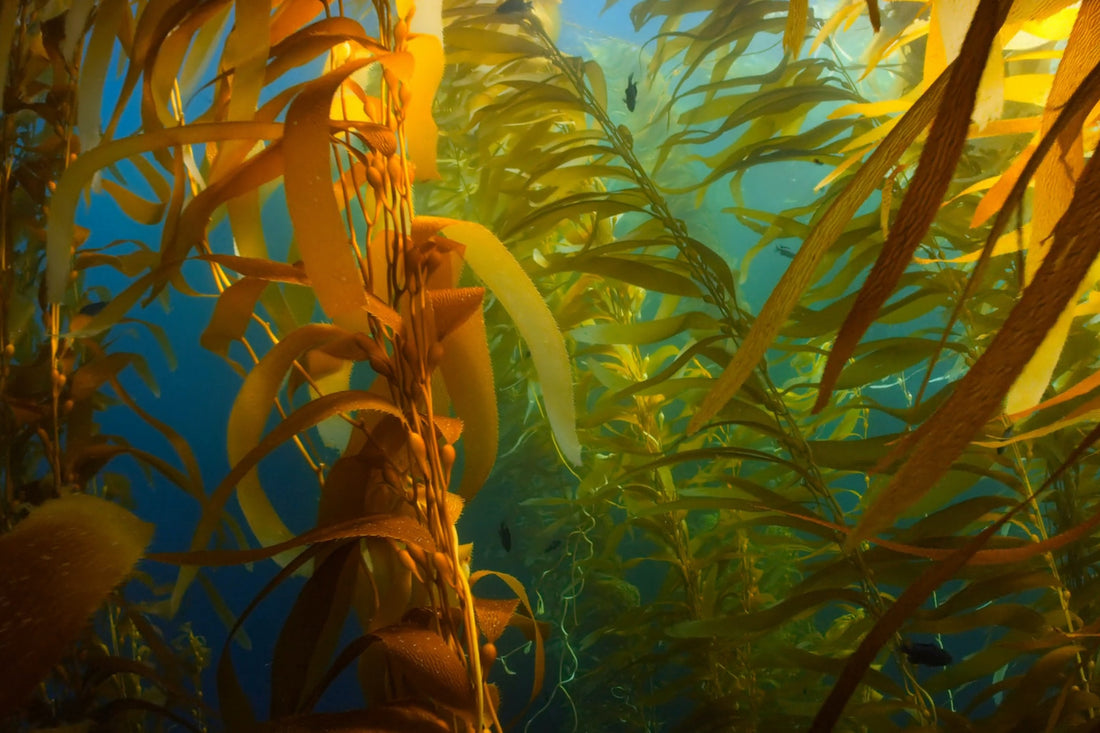The New Superfood
 Seaweed is one of the most primitive life forms,
consumed and utilized by humans for many centuries. Hundreds of species of seaweed exist and are consumed worldwide.
Seaweed has many important health benefits, and we as a culture should be consuming much more of it! In this piece
we discuss the components of seaweed that make it a functional food, as well as the many physiological and
biological benefits to consuming seaweed as a regular part of the diet. Another important aspect we touch on is the
sustainability and minimal environmental impact to farming seaweed.
Seaweed is one of the most primitive life forms,
consumed and utilized by humans for many centuries. Hundreds of species of seaweed exist and are consumed worldwide.
Seaweed has many important health benefits, and we as a culture should be consuming much more of it! In this piece
we discuss the components of seaweed that make it a functional food, as well as the many physiological and
biological benefits to consuming seaweed as a regular part of the diet. Another important aspect we touch on is the
sustainability and minimal environmental impact to farming seaweed.
Seaweed & Gut Health
Seaweed is a powerful prebiotic, with gut health benefits. Red algae and brown algae specifically are significantly high in polysaccharides, an essential fiber that is not digested in the upper GI tract; rather it feeds the beneficial bacteria in the lower GI tract. Prebiotics are a top of mind right now, and for good reason! We need to feed the beneficial bacteria in the gut, in order to avoid gut dysbiosis. Polysaccharides found in seaweed help maintain this delicate gut balance.
Edible seaweed contains 33% – 62% total fibers on a dry weight basis, which is higher than the levels found in plants, and these fibers are rich in soluble fractions.1
New reasearch, by Australian biotechnology company Marinova, found that bioactive ingredients extracted from wild Undaria pinnatifida and Fucus vesiculosus – can inhibit the production of key pro-inflammatory biomarkers that are clinically relevant in acute and chronic gut condition.2
It’s truly exciting that a naturally-derived marine ingredient has demonstrated such profound anti-inflammatory benefits with great potential to improve gut and digestive health,” says Dr. Helen Fitton, Chief Scientist at Marinova, commenting on the significance of the research.3
The prebiotic bio-complex in Broad Spectrum Synbiotic: Terraflora contains both wild-harvested Nova Scotian Bladderwrack [Fucus vesiculosus] and wild-harvested Patagonian Wakame [Undaria pinnatifida]. Both are ancient prebiotic seaweed extracts known for their positive affects on gut health.
What are the components of seaweed that make it a functional food?
Seaweed is rich in several important nutrients that help facilitate many biological functions within the body. Seaweed contains specific bioactive proteins, peptides, and amino acids. Some of the proteins in seaweed have the ability to take part in cell-to-cell communication, recognizing metastatic (cancer) cells, and can have an anti-inflammatory effect. Other proteins have an antiviral, anti-tumor, and anti-atherosclerosis, effect. One free amino acid found in seaweed is Taurine. Taurine works as an antioxidant, and prevents against toxicity of various heavy metals by preventing absorption in the stomach.4
Seaweed contains several different types of polysaccharides, all of which play a functional role within the body. Polysaccharides are the main reason for the increased attention seaweed is getting in the nutrition and scientific realm. Functional polysaccharides contain several different compounds responsible for immunomodulation, antitumor, antithrombotic, anticoagulant, anti-mutagenic, anti-inflammatory, antimicrobial, and antiviral activities in the body.5
Seaweed contains phytochemicals-compounds that possess strong antioxidant properties-working against oxidative stress in the body.
Certain polyphenols work as preventative medicines for problems such as cardiovascular diseases, cancers, arthritis and autoimmune disorders that have a direct link to oxidative stress.6
Researchers investigated the phytochemical constituents of seaweed, such as alkaloids, flavonoids, steroids, terpenoids and phlobatannins and determined the total antioxidant activity of various seaweeds. They discovered a high concentration of minerals, especially sodium and iodine, but also calcium, magnesium and iron. They also discovered a high antioxidant and antimicrobial activity in the seaweed studied. These researchers concluded,
The present study suggests that these seaweed extracts possess antibacterial activity against bacterial pathogens, thus supporting their folkloric usage, promising a future scope for the use of these marine seaweeds against microbial populations.7
Another important component to seaweed are lipids. EPA and DHA, (two fatty acids that are of physiological importance in the human diet) are found in high concentrations in seaweed. EPA and DHA are predominant fatty acids found in seaweed.8 Our body does not adequately produce these fatty acids, and therefore it is necessary to get them through diet.
EPA and DHA are important for proper fetal development, including neuronal, retinal, and immune function. EPA and DHA may affect many aspects of cardiovascular function including inflammation, peripheral artery disease, major coronary events, and anticoagulation. EPA and DHA have been linked to promising results in prevention, weight management, and cognitive function in those with very mild Alzheimer’s disease.9
Another lipid abundant in seaweed is sterol. Sterols from algae can reduce fatty liver and fatty deposits in the body.10 Recent studies show that several components to blue green algae contain properties that lower total cholesterol and triglycerides, through lipopogenic gene expression and the ability to modulate intestinal cholesterol.11
Finally, seaweed is a nutrient-rich source of many important vitamins and minerals. Seaweed is one of the best natural sources of bioavailable vitamins and minerals such as iodine, calcium, magnesium, Vitamin E, Vitamin A, and B12.12 Vitamin B12 (cobalamin) is an important vitamin in terms of cellular transport and utilization. Plants do not contain B12, as the dependent enzymes are not available, making deficiencies in Vitamin B12 common, especially for individuals following a vegetarian diet. Algae is rich in Vitamin B12, containing as much B12 as liver, making it a great source of Vitamin B12 for vegetarians.13
Necessary Nutrients
Seaweed consists of many components that make it an optimal health food for humans, and can contribute to decreased inflammation, and the prevention of inflammatory disease processes. Seaweed’s active components help fight free-radicals, and protect against oxidative stress in the body. Seaweed contain necessary vitamins, minerals and nutrients to keep us thriving, including:
- Iodine
- Calcium
- Magnesium
- Iron
- Potassium
- Phosphorus
- Manganese
- Copper
- Chromium
- Zinc
- Selenium
- Vitamin C
- Vitamin E
- Vitamin K
- B Vitamins (B1, B2, B3, B5, and B6
- Dozens of additional trace minerals.
Sustainable Food
As our population continues to expand, we need to support environmentally sustainable food production, and sea farming is one way to restore natural balance to the ocean environment. Seaweed thrives off excessive nutrients in our waterways, restoring the biological balance in the water, all the while producing a nutritious and affordable food!14
Farming seaweed actually converts 20 percent more carbon dioxide into plant matter than its production creates. This is known as carbon sink. And while this is certainly not a cure-all for the increased carbon dioxide in our atmosphere, food production that has beneficial impact is always welcome.15
Once seeded, seaweed does not require any additional work. The plants feed off the nutrients in the surrounding water, and help maintain water ecosystem balance. Unlike land plants, sea plants do not have to expend excess energy. Their growth rates are much greater than land plants, and all the energy expenditure comes solely from growth.16
Invest in your health and in the health of the environment. Awareness of the benefits to consuming seaweed is a huge step in the right direction. If you are looking for a real “superfood” in terms of nutritional benefits as well as conscious environmental sustainability, seaweed is the way to go!
References
- 1. Eresha Mendis & Se Kwon, Kim (2011). Marine Medicinal Foods: Implications and Applications, Macro and Micro Algae. Advances in Food and Nutrition Research. Vol 64. Pp 6-13.
- 2. Soothing seaweed: Fucoidan extracts found to reduce gut inflammation, Nutrition Insight, Nov, 2018
- 3. Soothing seaweed: Fucoidan extracts found to reduce gut inflammation, Nutrition Insight, Nov, 2018
- 4. Eresha Mendis & Se Kwon, Kim (2011). Marine Medicinal Foods: Implications and Applications, Macro and Micro Algae. Advances in Food and Nutrition Research. Vol 64. Pp 6-13.
- 5. Misurcova L, Skrovankova S, Samek D, Ambrozova J, Machu L (2012). Health benefits of algal polysaccharides in human nutrition.Advances in Food and Nutrition Research. 66: 75-145 doi: 10.1016/B978-0-12-394597-6.00003-3.
- 6. Eresha Mendis & Se Kwon, Kim (2011). Marine Medicinal Foods: Implications and Applications, Macro and Micro Algae. Advances in Food and Nutrition Research. Vol 64. Pp 6-13.
- 7. Soad M, Mohy ED, Amani EA (2016). Bioactivity and phytochemical contituentes of marine red seaweeds. Journal of Taibah University for Science. Vol 10, Issue 4 pp 471-84. doi:10.1016/j.jtusci.2015.06.004
- 8. Eresha Mendis & Se Kwon, Kim (2011). Marine Medicinal Foods: Implications and Applications, Macro and Micro Algae. Advances in Food and Nutrition Research. Vol 64. Pp 6-13.
- 9. Swanson, D, Block R, Mousa, S (2012). Omega-3 Fatty Acids EPA and DHA: Health Benefits Throughout Life. Advances in Food and Nutrition Research. Vol. 3: 1-7 doi: 10.3945/an.111.000893.
- 10. Eresha Mendis & Se Kwon, Kim (2011). Marine Medicinal Foods: Implications and Applications, Macro and Micro Algae. Advances in Food and Nutrition Research. Vol 64. Pp 6-13.
- 11. Siah Ku C, Yang Y, Park Y, Lee J (2013). Health Benefits of Blue-Green Algae: Prevention of Cardiovascular Disease and Nonalcoholic Fatty Liver Disease. Journal of Medicinal Food. Vol 16 (2): 103-111. doi:10.1089/jmf.2012.2468.
- 12. Eresha Mendis & Se Kwon, Kim (2011). Marine Medicinal Foods: Implications and Applications, Macro and Micro Algae. Advances in Food and Nutrition Research. Vol 64. Pp 6-13.
- 13. Croft MT, Lawrence AD, Raux-Deery E, Warren MJ, & Smith A. (2005). Algae acquire B12 through a symbiotic relationship with bacteria. 438, 90-93. doi:10.1038/nature04056.
- 14. Seaver, Barton (2016). Sustainable Seashores: The History and Future of Seaweed. Superfood Seaweed: A Guide to Cooking with Power-Packed Seaweed. 7. Ch. 1, pp 1-13.
- 15. Seaver, Barton (2016). Sustainable Seashores: The History and Future of Seaweed. Superfood Seaweed: A Guide to Cooking with Power-Packed Seaweed. 7. Ch. 1, pp 1-13.
- 16. Seaver, Barton (2016). Sustainable Seashores: The History and Future of Seaweed. Superfood Seaweed: A Guide to Cooking with Power-Packed Seaweed. 7. Ch. 1, pp 1-13.

